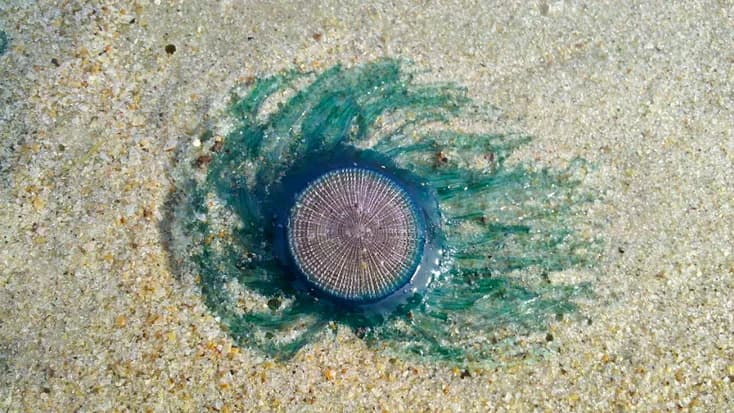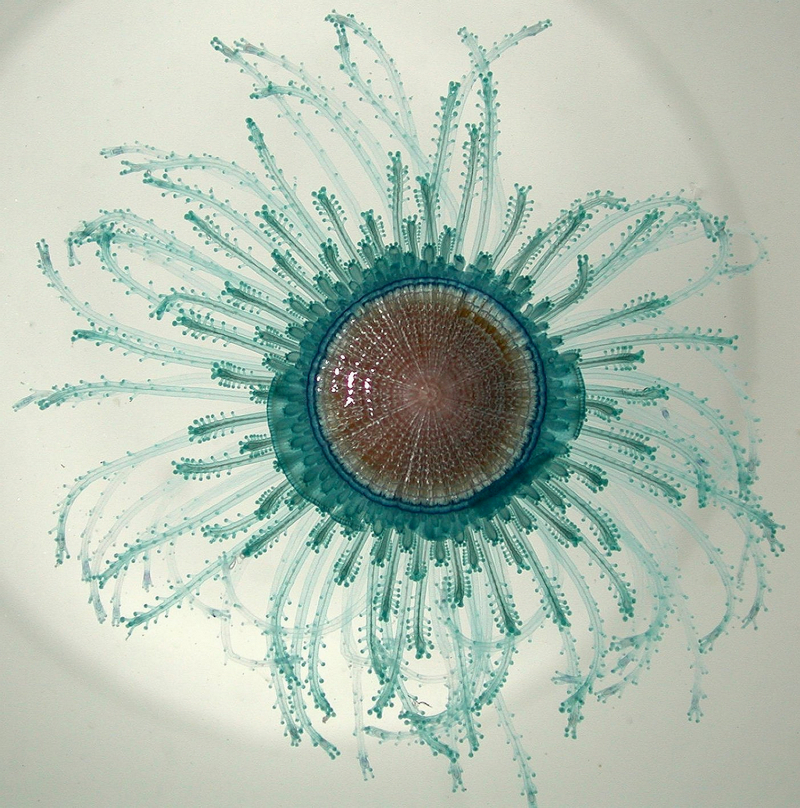Blue Button
The marine creature known as Blue Button (Porpita porpita), is made up of a colony of hydroids and can be found in the Mediterranean Sea and the eastern Arabian Sea as well as the warmer, tropical, and subtropical seas of the Pacific, Atlantic, and Indian oceans. It belongs to one of the two genera that make up the cnidarian suborder Chondrophora, which also contains Velella. The siphonophores, which include the Portuguese man of war, or Physalia physalis, are more well-known and share characteristics with the chondrophores. Each apparent individual, despite looking superficially like a jellyfish, is actually a colony of hydrozoan polyps. Because anemones, corals, and jellyfish are members of the phylum Cnidaria, which also includes the taxonomic class Hydrozoa, this explains why they have a similar appearance.
The blue button, which lives on the ocean's surface and has two primary components - the float and the hydroid colony - can get as big as 30 mm in diameter. The spherical, nearly flat, and firm golden brown float is about an inch broad. The floating organ, which also has pores that allow it to communicate with other P. porpita organisms and its surroundings, is what allows the organism to travel vertically. The hydroid colony mimics jellyfish tentacles and can range in color from vivid blue turquoise to yellow. Each strand has many branchlets, and the distal end of each nematocyst - a knob of stinging cells - is where they all stop.












